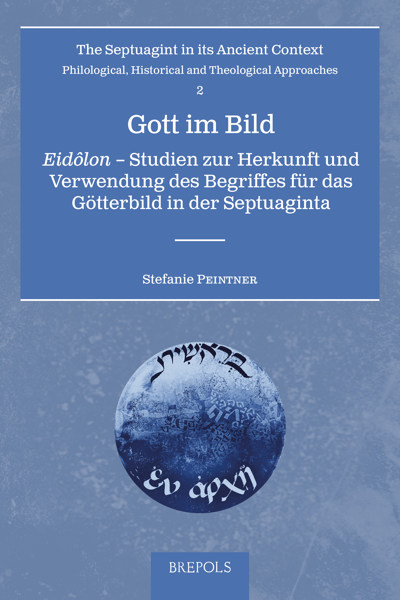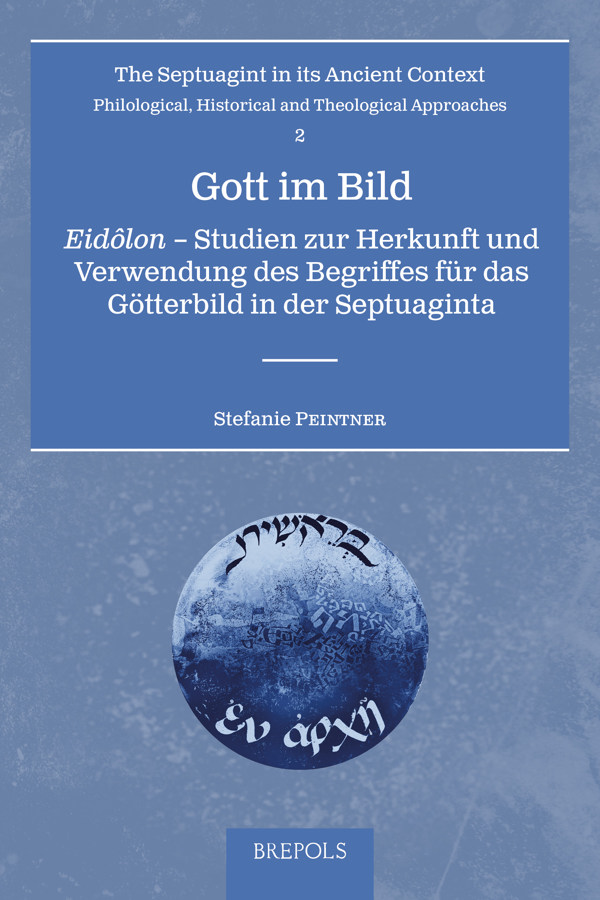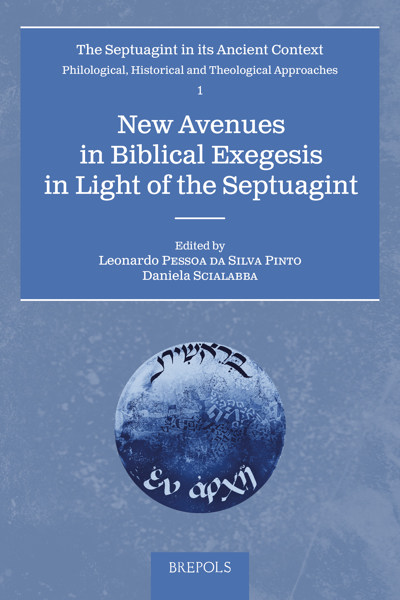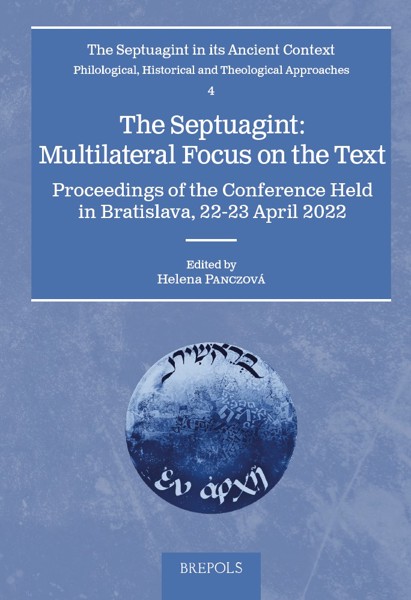
Gott im Bild
Eidôlon – Studien zur Herkunft und Verwendung des Begriffes für das Götterbild in der Septuaginta
Stefanie Peintner
- Pages: 290 p.
- Size:156 x 234 mm
- Illustrations:23 tables b/w.
- Language(s):German, Hebrew, Greek
- Publication Year:2023
- € 65,00 EXCL. VAT RETAIL PRICE
- ISBN: 978-2-503-59611-2
- Paperback
- Available
- € 65,00 EXCL. VAT RETAIL PRICE
- ISBN: 978-2-503-59612-9
- E-book
- Available
A systematic exploration of the uses and connotations of the term eidôlon – from Greek literature, over Egyptian sources from the Hellenistic period, up to the Septuagint
« Le travail atteint pleinement son objectif : en partant d’une analyse linguistique précise, SP identifie la signification théologique que donnaient les traducteurs de chaque livre au terme eidôlon. L’attention soutenue portée à l’intertextualité ainsi que la variété des sources annexes mobilisées (papyrus documentaires, textes qumraniens, sources archéologiques, littérature grecque profane) en font un ouvrage qui profitera à l’ensemble des spécialistes de la Bible grecque. » (Raphäelle Berterottière, dans Cahiers d’études du religieux. Recherches interdisciplinaires, en ligne, 25, 2023)
« Ce volume (...) est d’une utilité et d’une pertinence réelles. Il comble, certes, un vide dans les recherches aussi bien en théologie que dans les sciences des religions ; mais il constitue également un apport significatif dans les études septantiques sur la variété des acceptions de εἴδωλον et sur leurs impacts dans la version grecque de la Bible hébraïque, notamment dans les passages qui font référence à l’effigie des déités et qui exigent une articulation de la fécondité polysémique lexicale de εἴδωλον avec une construction rigoureuse du sens contextuel du mot (εἴδωλον). » (Paul-Marie Fidèle Chango, dans Revue Biblique, 132-3, 2025, p. 459-460)
“All in all, Peintner’s Gott im Bild is to be praised as a success, and a welcome one at that. Too many assumptions about εἴδωλον have reigned supreme in biblical lexicography for too long, but Peintner has complicated the matter admirably, cautioning against foregone categorisations. The scope of the book is impressive and Peintner’s textual analyses are often carefully measured.” (Alexander Chantziantoniou, in Journal of Septuagint and Cognate Studies, 57, 2024, p. 290)
Stefanie Peintner (née Plangger), studied theology at the Universities of Innsbruck (A) and Strasbourg (F) with a research stay in Cambridge. 2018 Dr. theol. (University of Strasbourg), editorial member of the Historical and Theological Lexicon of the Septuagint (2013-2018). Since 2018 she holds a responsible position in the Jewish-Christian dialogue in Austria
In the present day, the term ‘idol’ is often associated with a personality cult, but it still contains traces of its ancient meaning, namely above all the idea of worship. But this exactly creates a problem for the faith in God attested in the Old Testament. Worship and imagery obviously contradict the Old Testament commandment of worshipping the God of Israel without any image. This study fills a gap in the research in theological and religious studies by systematically exploring the various uses and connotations of the term eidôlon. The starting point is an examination of the use of eidôlon in Greek literature and in Egyptian sources from the Hellenistic period. The main part of the work is devoted to the various connotations of the term that later find their way into the Septuagint, the Greek Bible. There, as well as in later Jewish-Hellenistic literature, eidôlon becomes the terminus technicus for the pictorial representation of deities.
Der Begriff Idol verbindet sich in der Gegenwart häufig mit einem Personenkult, enthält aber immer noch Spuren seines antiken Wortsinnes, nämlich vor allem die Idee der Verehrung. Doch darin offenbart sich das Problem für den im Alten Testament bezeugten Gottesglauben. Verehrung und Bildhaftigkeit stehen offenbar im Widerspruch zum alttestamentlichen Gebot der bildlosen Alleinverehrung des Gottes Israels. Diese nun vorliegende Studie füllt eine Lücke in der theologischen und religionswissenschaftlichen Forschung, indem sie systematisch die verschiedenen Verwendungen und Konnotationen des Begriffs eidôlon erforscht. Ausgangspunkt ist eine Untersuchung des Gebrauchs von eidôlon in der griechischen Literatur und in ägyptischen Quellen aus hellenistischer Zeit. Der Hauptteil der Arbeit widmet sich den verschiedenen Konnotationen des Begriffs, die später Eingang in die Septuaginta, die griechische Bibel, finden. Dort, sowie in der späteren jüdisch-hellenistischen Literatur, wird eidôlon nämlich zum terminus technicus für bildliche Darstellung von Gottheiten.
Vorwort
Einleitung
I. Εἴδωλον in nichtjüdischen Texten
II. Hebräische Äquivalente
III. Εἴδωλον im Pentateuch
IV. Psalter
V. Prophetie
VI. Königtümer, Chronik und das Buch Daniel
VII. Das Buch der Weisheit, das Buch Tobit, der Brief des Jeremia und die Bücher der Makkabäer
VIII. Schlussbetrachtung und Zusammenfassung
Literaturverzeichnis
Indices




